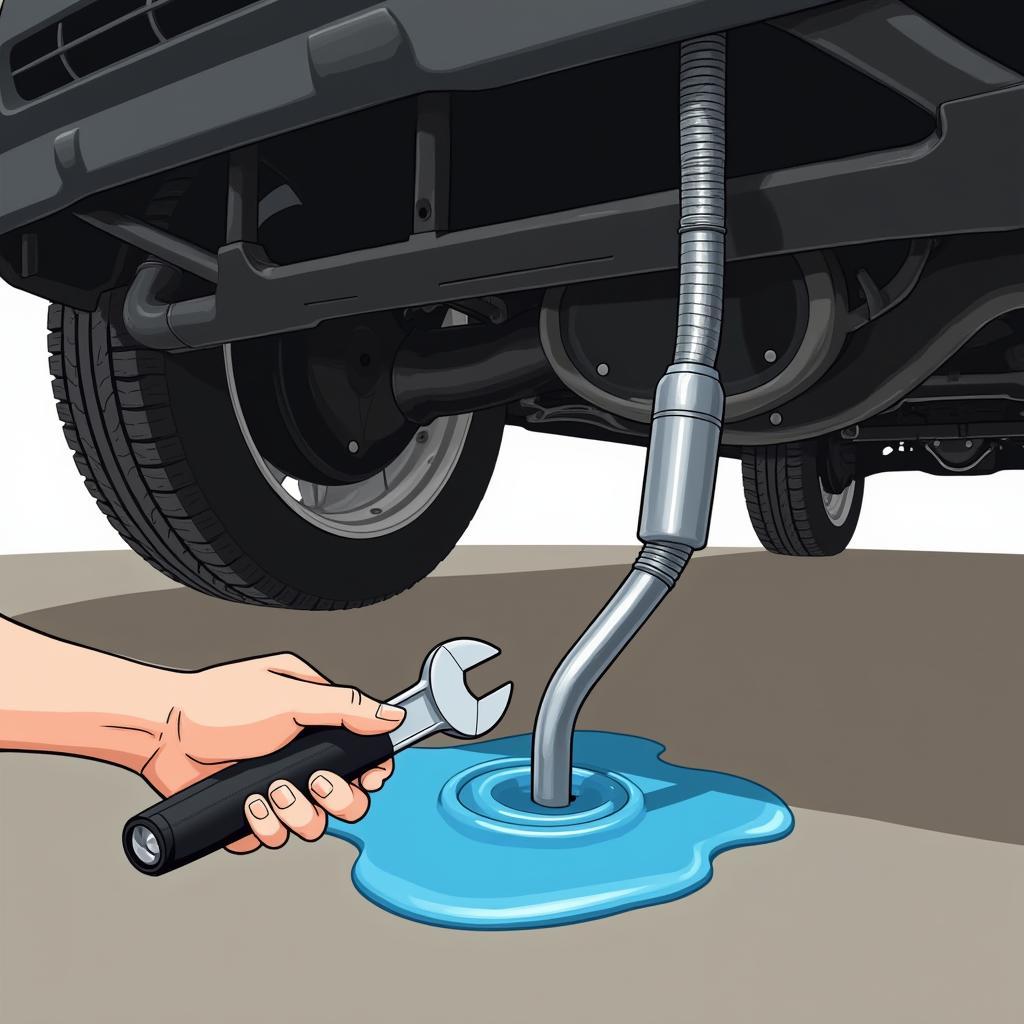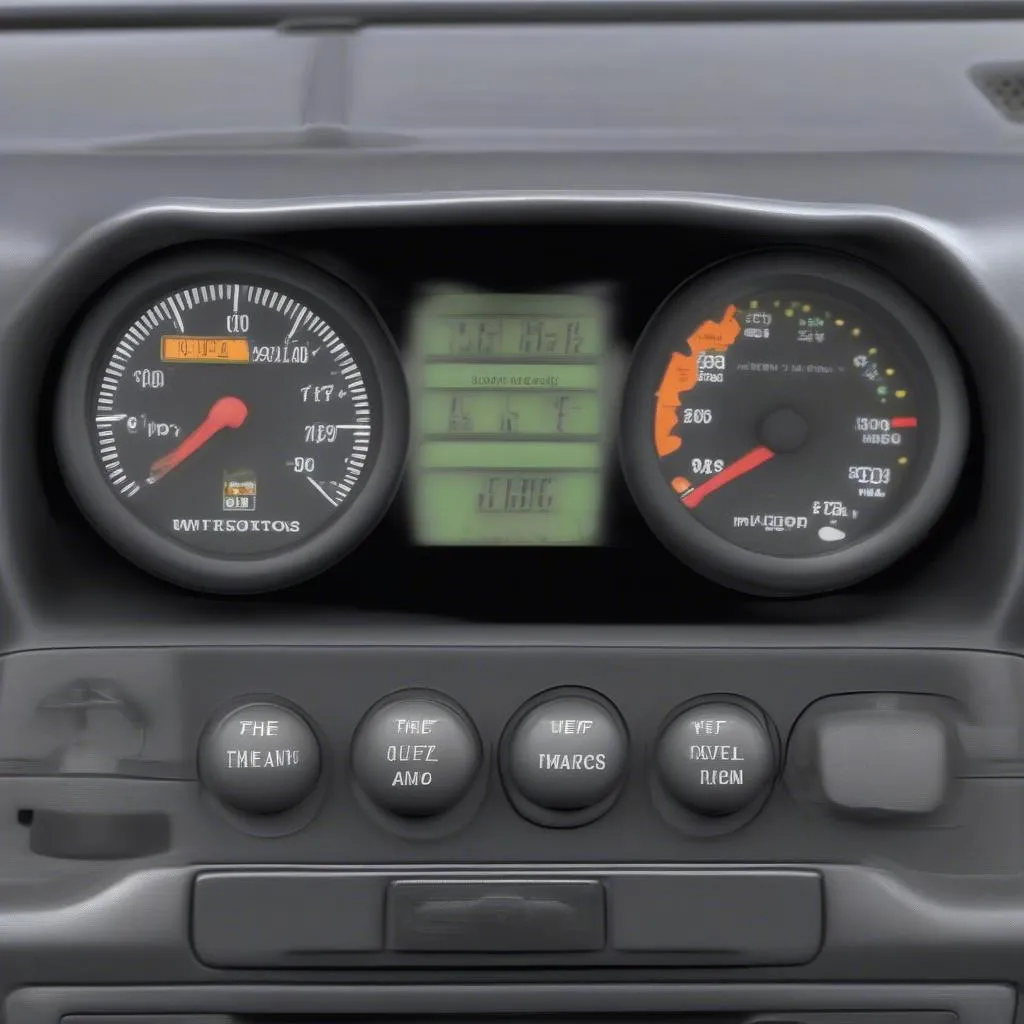A failing alternator is a common cause of car battery drain. This article dives into the relationship between a bad alternator and a drained battery, explaining the symptoms, diagnosis, and solutions. We’ll explore how to identify a faulty alternator and provide guidance on how to address the problem.
If your car won’t start and you suspect a bad alternator, you’re in the right place. This detailed guide will provide valuable insights to help you understand the intricacies of your vehicle’s charging system and how a faulty alternator can quickly lead to a dead battery. Read on to gain the knowledge you need to diagnose and resolve this frustrating issue. Battery light on car dashboard often indicates an issue within the electrical system, including a potential problem with the alternator.
How an Alternator Works and Its Impact on Your Battery
The alternator is the heart of your car’s electrical system. Its primary function is to recharge the battery while the engine is running and power all the electrical components, such as the headlights, radio, and power windows. A healthy alternator continuously replenishes the battery’s charge, ensuring it has enough power to start the engine and run the vehicle’s electrical systems. When the alternator malfunctions, this delicate balance is disrupted.
Signs of a Failing Alternator
Several telltale signs indicate a failing alternator. Recognizing these symptoms early can prevent a complete breakdown and costly repairs. Common symptoms include:
- Dimming or flickering headlights
- Interior lights that dim or brighten erratically
- Dashboard warning lights, particularly the battery light
- Strange noises coming from the alternator, such as whining or grinding
- Difficulty starting the car or the engine stalling while driving
- Electronic accessories malfunctioning, such as the radio or power windows
“A bad alternator puts extra strain on the battery, forcing it to work overtime,” says automotive electrical expert, Michael Stevens. “This constant drain can significantly shorten the battery’s lifespan.”
Diagnosing a Bad Alternator
While the symptoms mentioned above can point towards a failing alternator, a proper diagnosis is crucial. Here’s how to test your alternator:
- Visual Inspection: Check the alternator belt for cracks, fraying, or looseness. A damaged belt can prevent the alternator from functioning correctly.
- Battery Voltage Test: Use a multimeter to check the battery voltage with the engine off. A healthy battery should read around 12.6 volts.
- Running Voltage Test: Start the engine and check the battery voltage again. A functioning alternator should raise the voltage to between 13.5 and 14.5 volts.
- Load Test: With the engine running, turn on the headlights, radio, and other electrical accessories. The voltage should remain within the 13.5-14.5 volt range. A significant drop in voltage indicates a problem with the alternator.
How to start car with key fob from outside might be useful information if you’re struggling to start your car due to a dead battery.
What Happens When Your Alternator Drains Your Battery
A faulty alternator doesn’t directly drain the battery in the same way a parasitic draw does. However, it prevents the battery from being recharged. This means the battery is solely responsible for powering the car’s electrical systems, leading to a rapid depletion of its charge. Eventually, the battery will be completely drained, leaving you stranded with a car that won’t start.
The Importance of Addressing a Failing Alternator Promptly
Ignoring a failing alternator can lead to further damage and more expensive repairs. A completely drained battery can sulfate, reducing its lifespan or rendering it useless. Additionally, a failing alternator can damage other electrical components in your car. “Addressing alternator issues quickly can save you time, money, and frustration in the long run,” advises automotive engineer, Sarah Chen.
Seat Mii dashboard warning lights can provide helpful clues if you’re experiencing electrical problems, especially those related to a bad alternator. Furthermore, understanding the dashboard warning symbols Seat Ibiza will help you diagnose potential issues quickly.
Conclusion
A bad alternator doesn’t technically drain your battery, but it prevents it from recharging, leading to a dead battery. Recognizing the signs of a failing alternator, such as dimming lights and difficulty starting, is crucial. Promptly addressing the issue will prevent further damage and costly repairs. Don’t delay; get your alternator checked today! If you’re concerned about your brakes, it might be helpful to learn about the anti lock brake dashboard warning light.


